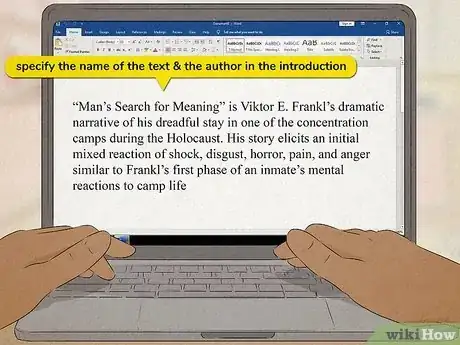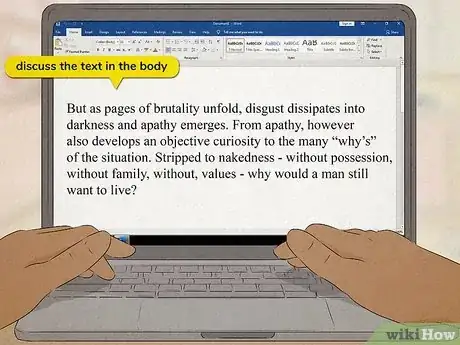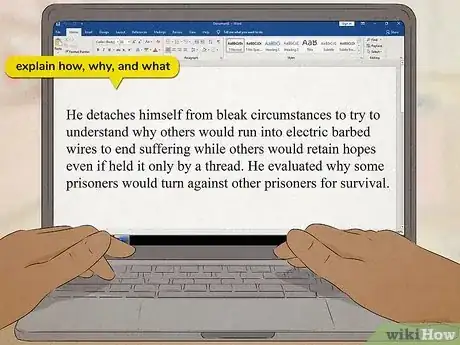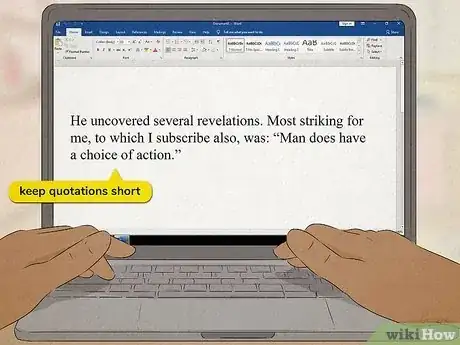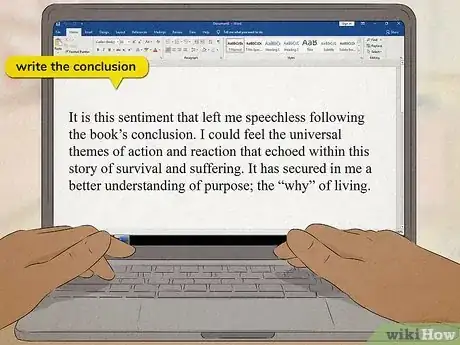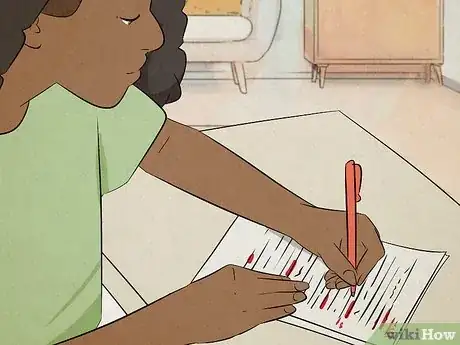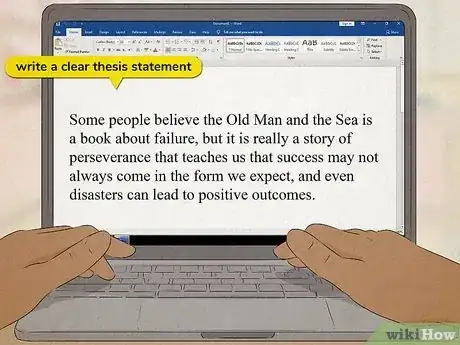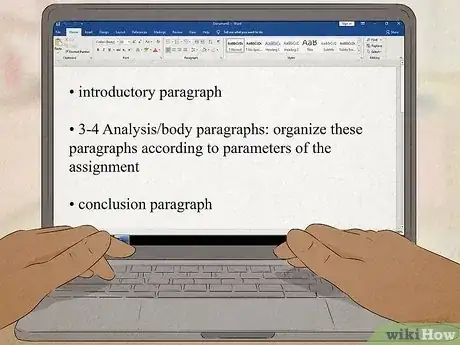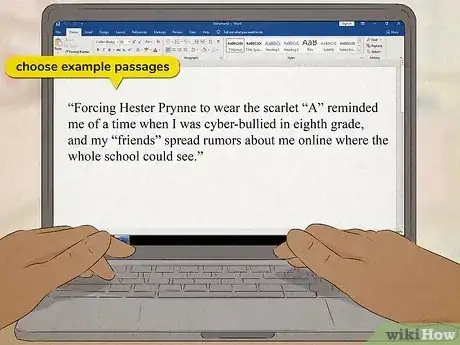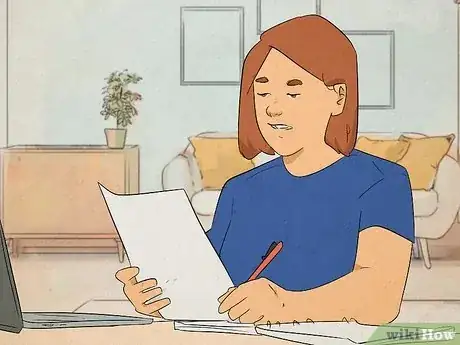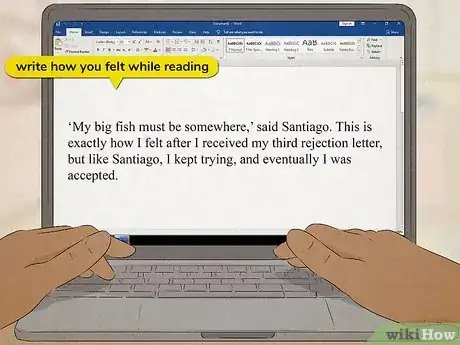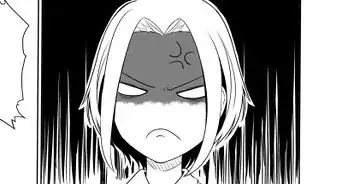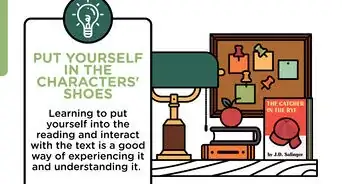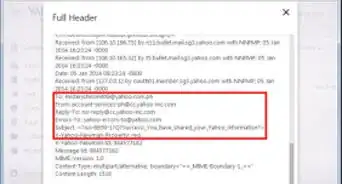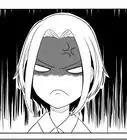This article was co-authored by Diane Stubbs. Diane Stubbs is a Secondary English Teacher with over 22 years of experience teaching all high school grade levels and AP courses. She specializes in secondary education, classroom management, and educational technology. Diane earned a Bachelor of Arts in English from the University of Delaware and a Master of Education from Wesley College.
There are 9 references cited in this article, which can be found at the bottom of the page.
wikiHow marks an article as reader-approved once it receives enough positive feedback. This article has 13 testimonials from our readers, earning it our reader-approved status.
This article has been viewed 395,925 times.
A reader response assignment asks you to explain and defend your personal reaction to an assigned text. Reader response papers can be difficult because they force you, the reader, to take responsibility for giving meaning to the text. Often these assignments feel open-ended and vague, but don't worry, a good reader response paper will follow a standard essay format that you can easily master. This guide will walk you through the creation of a well-crafted reader response paper that's sure to wow your instructor and earn you an awesome grade.
Steps
Writing the Reader Response
-
1Write the introduction. Make sure that the introduction clearly specifies the name of both the text and the author. It should also include some description of the text, and what it's about. The Introduction should end with your thesis statement or argument.
-
2Write the body paragraphs. You should write 3-4 paragraphs that discuss the text and the reading questions in depth. You don't necessarily have to answer each question in order. Multiple questions can be combined and addressed in a single paragraph, or reordered in a way that flows well and makes sense to you.[1]
- It is often helpful to use the first body paragraph to include more information about the text, the plotline, major themes, etc., and then use the rest of the paragraphs to provide an analysis of how you felt about the text.
Advertisement -
3Remember to explain how, why, and what. As you write your paper, think about explaining not just how you felt about the text, but why it made you feel a certain way. ("Chapter 2 made me feel uncomfortable 3 because... ") Don't just state that the text taught you a lot, give an example of something you actually learned. ("I learned that sometimes we don't realize how our actions affect others... ")[2]
- Remember that a reader response is meant to be personal, so it's OK to incorporate personal anecdotes and opinions into your analysis.
- Example: "Forcing Hester Prynne to wear the scarlet "A" reminded me of a time when I was cyber-bullied in eighth grade, and my "friends" spread rumors about me online where the whole school could see."
-
4Incorporate specific examples into your analysis. Each body paragraph should include at least 1-2 specific examples from the text. These don't all have to be direct quotations. For example, you might simply describe a particular event or passage in the text.
- Example: "At the end of The Old Man and the Sea, Manolin promises to once again fish with Santiago, so the old man no longer has to be alone. This was Santiago's greatest wish, but it was a different kind of success than he initially set out to achieve."
-
5Keep quotations short and sweet. Resist the temptation to string together multiple multi-line quotes, and make sure to include at least one sentence after each quote explaining how it relates to the point you are making.[3]
- Example: "'My big fish must be somewhere,' said Santiago. This is exactly how I felt after I received my third rejection letter, but like Santiago, I kept trying, and eventually I was accepted."
- Make sure and cite your examples per class directions. You will usually be required to note the page numbers of any quotations or specific examples in parentheses at the end of the sentence.
-
6Write the conclusion. This should be one paragraph that summarizes your arguments so far, and brings the reader back to your thesis or main point.[4]
- A great way to think of your conclusion is that it's one last chance to explain to your reader how you see all of your points fitting together.
-
7Proofread, proofread, proofread!! Make sure and give your paper a thorough once-over, looking for typos, grammatical errors, and things that don't quite make sense.[5]
- Sometimes it's hard to see our own mistakes, so it can really help to exchange papers with a friend, and proofread each other's work.
Drafting the Reader Response
-
1Identify an angle you can take when talking about the text. A good reader response paper must have a clear thesis statement or overall argument. If the assignment specified a central question to focus on in your response, the answer to that question should become your thesis statement. If not, your thesis should address you overall impression of the book.[6] An example thesis statement might look like the following:
- "Even though I found The Scarlett Letter hard to follow at times, Hester Prynne's story is still relatable, and made me think a lot about the effects of publicly shaming people online."
- "Some people believe the Old Man and the Sea is a book about failure, but it is really a story of perseverance that teaches us that success may not always come in the form we expect, and even disasters can lead to positive outcomes."
-
2Outline the essay. You will need to follow the directions for your specific assignment, but most reader response papers are about 2-3 pages long, and use the following general outline:[7]
- Introduction: 1 paragraph.
- Analysis/Body Paragraphs: 3-4 paragraphs. How you organize these paragraphs will depend on the parameters of the assignment.
- Conclusion: 1 paragraph.
-
3Choose example passages to use in your analysis. These should support your thesis statement, and provide clear examples of the kinds of things you want to talk about in your analysis. Is there a key bit of dialogue that really captures the protagonist's personality? Is there a scene that reminded you of something from your personal life, or taught you how you might handle a specific situation?
Reading the Text
-
1Go over the assignment directions before you begin. The assignment should give you a list of specific questions that you need to answer in your response. Becoming familiar with the questions before you begin the assignment will help you know what to look for and think about as you read. If the questions are not specified, use the following questions to guide your reading:[8]
- Do you like or dislike the text?
- Can you identify the author's purpose?
- Do you agree or disagree with the author?
- Does the text relate to you and your life? If so, how? If not, why not?
- Does the text agree with, or go against your personal world view?
- What, if anything, did you learn from the text?
-
2Read the text. To write a good reader response paper, it is important to read the text fully and carefully. Take your time and think about how the text is making you feel and why. Take lots of notes. Bookmark important passages that you think you might use when you write your response, or write down page numbers of key sections.
- Taking a bit of extra time during this phase will save you a lot of time in the writing process.[9]
-
3Contemplate what you have read. Before you begin writing, it is helpful to take some time to think about the text as a whole, and formulate an overall impression of the work. Did you love it? Did you hate it? Is there something about it that really bothered you, or really spoke to you? Completing some or all of these sample statements can help you with this process. After reading the text:[10]
- I think that...
- I feel that...
- I see that...
- I have learned that...
Sample Reader Response
Community Q&A
-
QuestionIs there a difference between a reading response and a book report?
 Community AnswerYes. A reading response provides a thesis statement of opinion that can be backed up with evidence from the work it reviews. It includes personal reflections that elaborate your connection to the written or artistic work (any type of media can be the subject of a response essay). By contrast, a book report simply summarizes the setting, characters, and/or the sequence of events in a book, and it could be of any genre. There is no thesis statement unless the instructor requires one that relates to the main subject, and it usually does not include personal stories as the response essay does in a reflective way.
Community AnswerYes. A reading response provides a thesis statement of opinion that can be backed up with evidence from the work it reviews. It includes personal reflections that elaborate your connection to the written or artistic work (any type of media can be the subject of a response essay). By contrast, a book report simply summarizes the setting, characters, and/or the sequence of events in a book, and it could be of any genre. There is no thesis statement unless the instructor requires one that relates to the main subject, and it usually does not include personal stories as the response essay does in a reflective way. -
QuestionIs a reader response mostly a summary with the emotions you felt?
 Community AnswerRather than a summary, give more of an analysis - not what happened but WHY the author made it happen that way, and yes, feel free to include the emotions you felt.
Community AnswerRather than a summary, give more of an analysis - not what happened but WHY the author made it happen that way, and yes, feel free to include the emotions you felt. -
QuestionIs a reader response essay the same as a literary analysis essay?
 Community AnswerA reader's response can be a short essay, graphic organizer or paragraph; it's a summary along with your reaction. A literary analysis essay is a structured five-paragraph work. Your introduction paragraph will include the hook, background information and your thesis statement. Your body paragraphs will include your topic sentence, introducing a sentence, a quote, your analysis and a concluding sentence. Your conclusion paragraph will include a final thought. You should also restate your thesis. Avoid using personal pronouns, contractions and abbreviations.
Community AnswerA reader's response can be a short essay, graphic organizer or paragraph; it's a summary along with your reaction. A literary analysis essay is a structured five-paragraph work. Your introduction paragraph will include the hook, background information and your thesis statement. Your body paragraphs will include your topic sentence, introducing a sentence, a quote, your analysis and a concluding sentence. Your conclusion paragraph will include a final thought. You should also restate your thesis. Avoid using personal pronouns, contractions and abbreviations.
References
- ↑ https://penandthepad.com/rules-writing-reading-response-essay-3968.html
- ↑ https://courses.lumenlearning.com/suny-jefferson-english102/chapter/reader-response-criticism-american-literature-i/
- ↑ https://writingstudio.gsu.edu/files/2021/02/Reading-Response.pdf
- ↑ https://penandthepad.com/rules-writing-reading-response-essay-3968.html
- ↑ https://owl.purdue.edu/owl/general_writing/the_writing_process/proofreading/steps_for_revising.html
- ↑ https://faculty.washington.edu/momara/Reader%20Response.pdf
- ↑ https://www.grammarly.com/blog/essay-outline/
- ↑ http://www.hunter.cuny.edu/rwc/handouts/the-writing-process-1/invention/Writing-a-Response-or-Reaction-Paper
- ↑ http://education-portal.com/articles/Step-by-Step_Guide_to_Writing_a_Great_Reading_Response_Paper.html
About This Article
To write a reader response, develop a clear thesis statement and choose example passages from the text that support your thesis. Next, write an introduction paragraph that specifies the name of the text, the author, the subject matter, and your thesis. Then, include 3-4 paragraphs that discuss and analyze the text. Finish up with a conclusion paragraph that summarizes your arguments and brings the reader back to your thesis or main point! For tips on analyzing the text before writing your assignment, read on!
